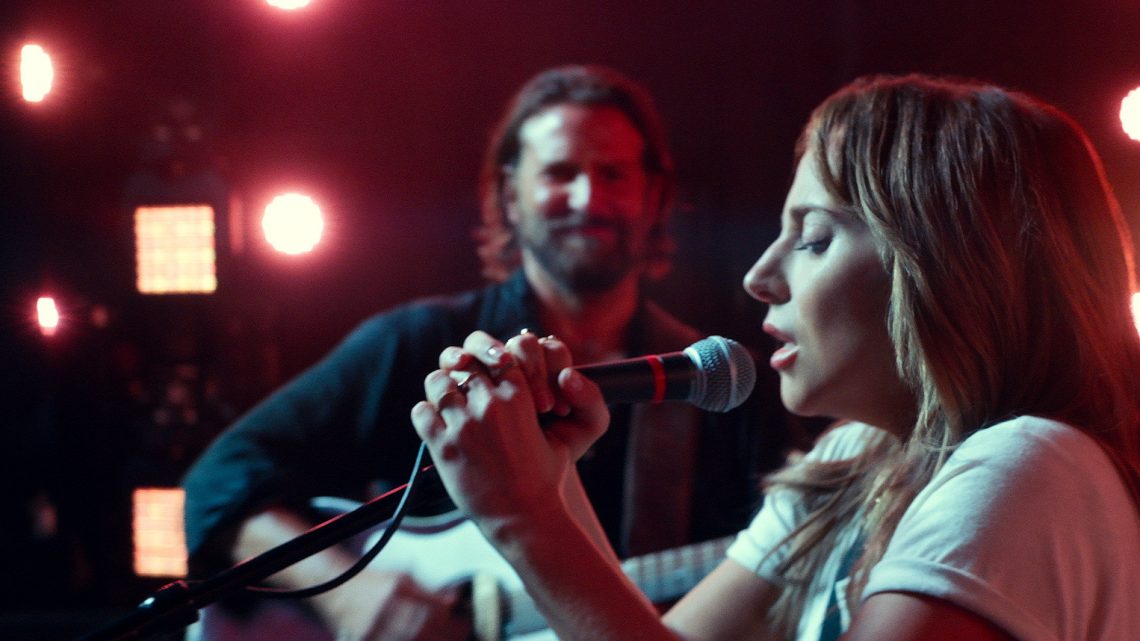
This Is the Best Version of ‘A Star Is Born’ Yet
October 5, 2018The following post contains spoilers for A Star Is Born.
Let’s get one thing out of the way: the new reboot of A Star Is Born, starring Lady Gaga and Bradley Cooper, is fantastic. Stripped of makeup and her usual ostentatious getups, Gaga is riveting as Ally, a down-on-her-luck singer-songwriter who’s given up on “making it,” thanks to one-too-many label execs telling her they liked her voice but not her face. Cooper, who also co-wrote the script and directed the film, plays Jackson Maine, the alcoholic rock star who falls for Ally and kick starts her ascent to superstardom.
The chemistry between them is palpable and impressive, especially considering this is Gaga’s first major acting gig—a fact I kept forgetting, remembering, and being amazed by throughout the film. Cooper reportedly cast Gaga after seeing her perform “La Vie en Rose” at a charity event in 2016; he drove to her house in Malibu the next morning to test their chemistry. It’s the same song Jackson sees Ally perform at a drag club, setting their story in motion.
A Star Is Born has been remade a staggering four times—with Janet Gaynor and Fredric March in 1937; Judy Garland and James Mason in 1954; Barbra Streisand and Kris Kristofferson in 1976; and now Gaga and Cooper. When the new film started getting buzz at the Toronto International Film Festival, I decided to watch all the old ones to see what the fuss was about. Each one, from the clothes and the songs, to the stars’ professions and the couples’ courtship, feels like a time capsule of its era. It’s fascinating to revisit them all, because they say so much about how American views on fame, addiction, and gender have changed over the course of a century.
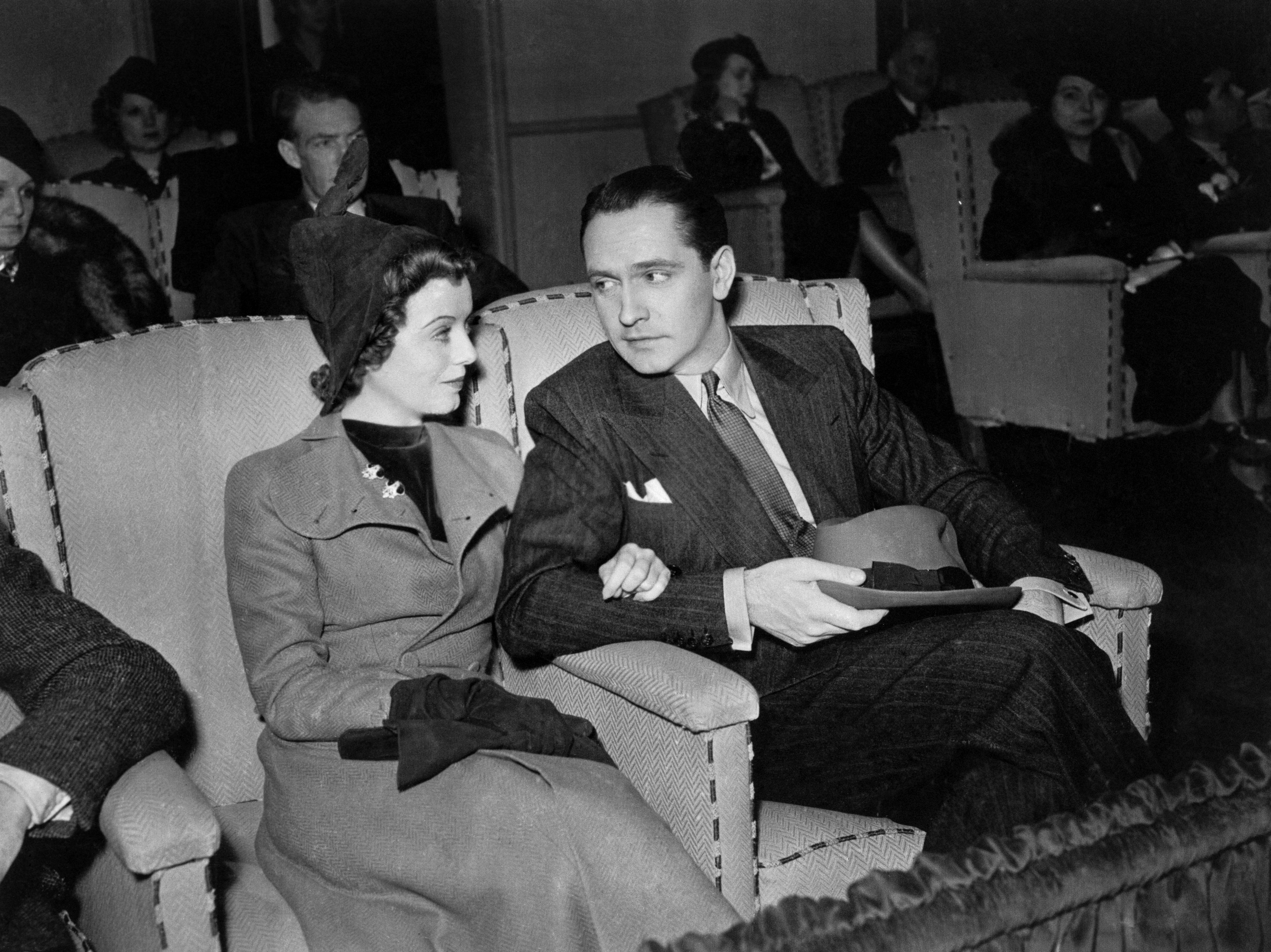
In the 1937 film, Gaynor plays Esther Blodgett, a Nebraska farm girl who boards a train bound for Los Angeles to try her luck as an actress. She’s bankrolled by her grandmother, a spunky pioneer woman whose late husband, we learn, was killed by Native Americans in the 1800s—an obviously problematic plotline by today’s standards. In this telling, Esther going to Hollywood feels like a continuation of white western expansion—Manifest Destiny on celluloid.
March is Norman Maine, a studio paramour and sloppy drunk who takes a shine to Esther at a party she’s working as a cater waiter. He helps her get signed to his studio, they rename her “Vicki Lester,” he convinces studio execs to cast her opposite him, and all of a sudden she’s a hit. As in all the films, the scales of fate can’t favor them both; as her star rises, his must fall. Cringingly, when Vicki wins an Oscar, an inebriated Norman hijacks her speech and accidentally slaps her in the face—a moment that’s also, unfortunately, in the 1954 film.
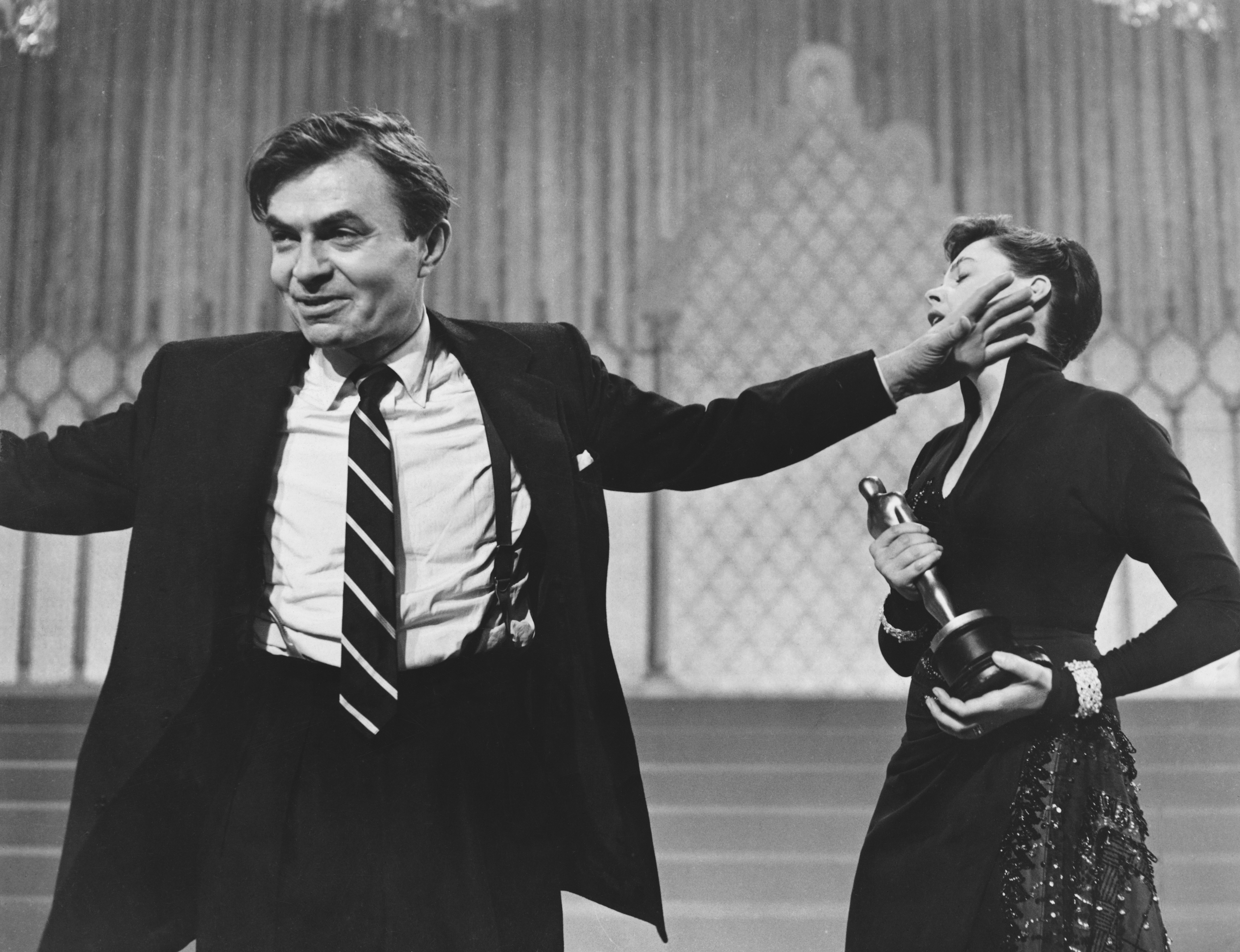
The 50s remake starring Garland actually lifts most of its dialogue word-for-word from the 30s original, but now it’s a musical with songs by Ira Gershwin and nearly three hours long. And despite being made almost two decades later, the 1954 film is both more sexist and more racist. A scene in a nightclub where Maine is shopping for women with the help of a maître d’ is repulsive. There’s also a whole musical number where Garland imitates cultures around the world, at one point putting a lampshade on her head to portray an Asian person. The story wraps up like the 1937 version, with Norman choosing to kill himself and wading into the ocean at sunset.
The 1976 A Star Is Born reboots the story as a hippie-glam rock and roll fable, with a script co-written by Joan Didion and her late husband John Gregory Dunne. Streisand, as Esther Hoffman, has huge hair and sports some incredible 70s fashion. (The credits amazingly read, “Ms. Streisand's clothes from ... Her Closet.”) Kristofferson is John Norman Howard, a perpetually inebriated rock star who routinely does insane things like catapult offstage on a motorcycle and shoot a gun at a DJ in a helicopter. When he meets his end, it’s in a drunken car crash with his wife’s album on 8-track.
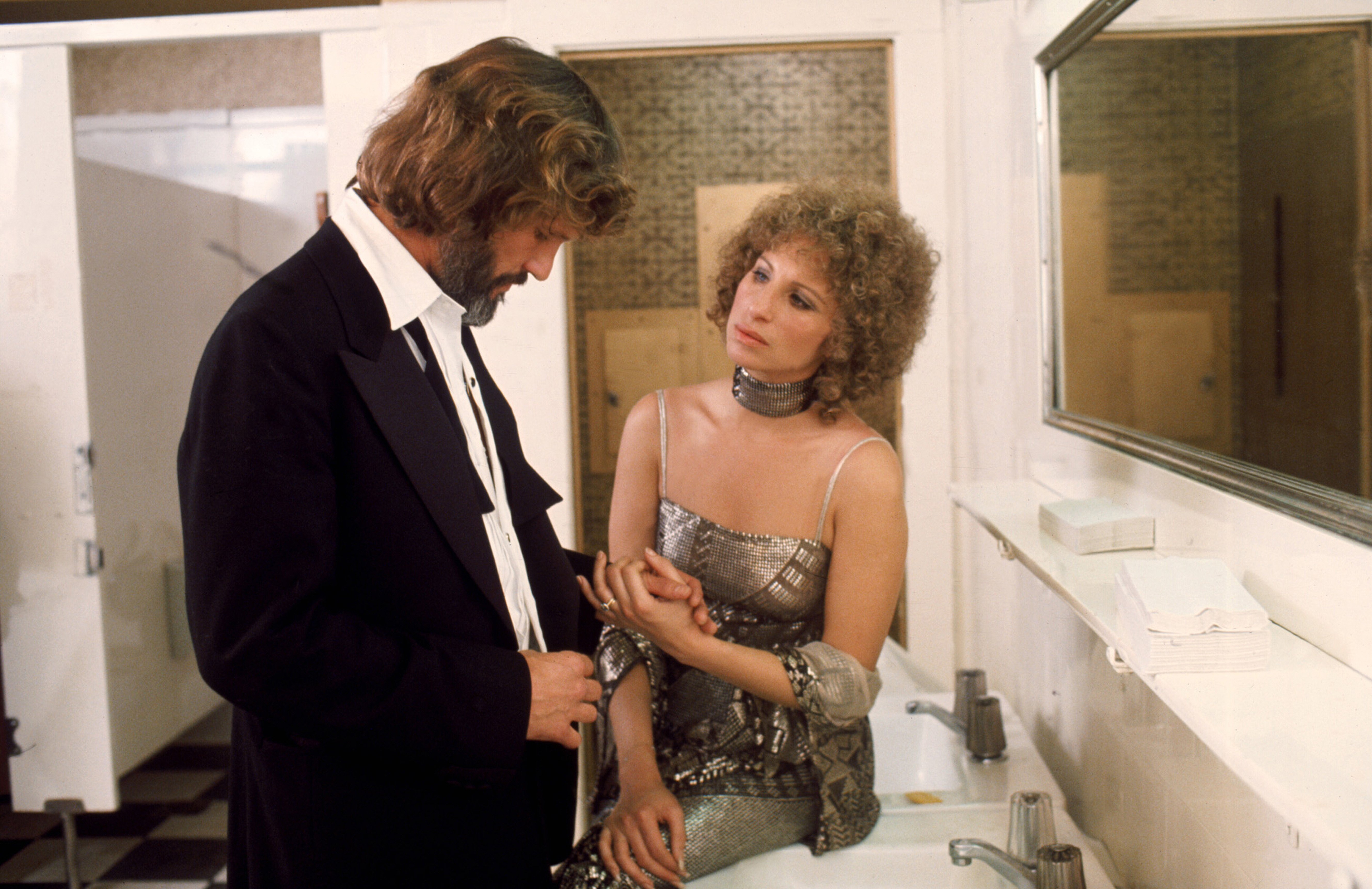
The new film is the best of the bunch, but it owes a lot to its predecessors, since Cooper essentially got to cherry-pick what worked and rethink what didn’t. It’s like he’s renovating a sturdy old house: its structure is solid, but he’s improving the dated façade.
A few things about the 2018 reboot are objectively better: Ally and Jackson have depth and complex backstories, whereas the leads in a lot of the old versions feel like archetypes—the hapless drunk; the naïve ingénue. Streisand’s Esther is an exception. She’s feisty and calls John Norman on his bullshit, but she’s never totally believable as a songstress on the verge of giving up. She’s too much of a diva from the beginning.
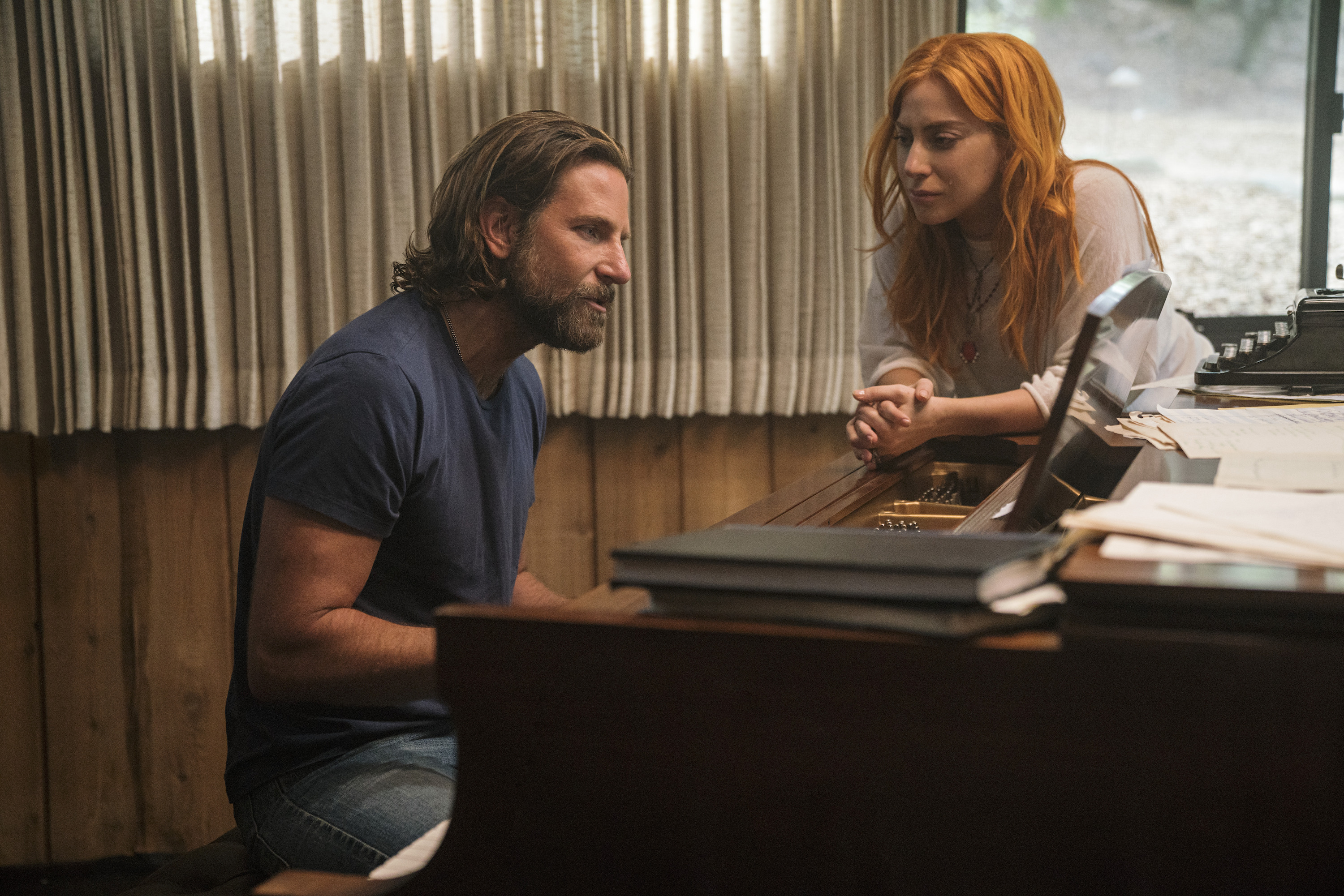
A Star Is Born has always been a vehicle for already-famous women. Gaynor was a silent film star and the first woman to win an Academy Award in 1929. Garland had been in the public eye since she starred in The Wizard of Oz at 17. Streisand won four Grammys and an Oscar almost a decade before A Star Is Born was filmed. (And she took home a few more awards for her role.) Gaga is no exception. She rocketed to pop stardom in 2008 with her debut album and has captivated the public since. It’s a testament to her acting that Ally’s metamorphosis from nobody to somebody is so arresting. Cooper reportedly coached Gaga to imagine what life would be like if she were 31 and had never made it. The possibility has clearly crossed her mind.
There’s a neat mythology to Hollywood that points to why the story of A Star Is Born is so evergreen. The fantasy of becoming rich and famous parallels the American dream, in that it feels like an attainable fairy tale regardless of race, gender, or socio-economic status. We’re a country without royals, meaning—at least in theory—no one’s disqualified from celebrity by their bloodline.
In the 1937 movie, a casting director tells Esther, “You know what your chances are? One in 100,000.” Today the truism is more like one in a million. Those odds still rarely discourage the legions of hopefuls. If anything, they’re taken as a challenge. To the woman trying to dash her dreams, Esther replies, “But maybe I’m that one.” We all like to think we’re exceptional; it’s why people see movies like La La Land, audition for shows like The Voice, and eschew college to cultivate a following on YouTube.
Before I saw the new film, I wrote off the older ones as a parade of fragile male egos. Gaynor, Garland, and Streisand are luminous women. The fact that they’d tolerate and mourn for a partner who suppressed their luster was upsetting. Cooper’s reboot is different, and it speaks to the way we’re slowly beginning to talk and think about partnership, gender, and addiction.
According to Hollywood lore, stars like Cary Grant turned down the role of Norman Maine in the 1954 film, because they didn’t want to portray an actor on the decline. But Cooper’s script goes out of its way to show Jackson in the worst possible light—piss, vomit, cowardice, and all. It’s notable Cooper wrote him and chose to play him this way.
He’s also lovable, and the film lingers on the moments between Jackson and Ally that cement a partnership, like when she throws a punch in a bar and he tapes a bag of frozen peas to her swollen knuckles, sticking her fingers in his mouth to loosen her rings first. Or when she gains a modicum of success and he becomes jealous and petulant, smearing frosting on her face when she calls him out on it. When the lovers flirt, fight, love, and let each other down, it packs a wallop, because they’re fully formed, flawed people.
In all the films, people don’t show much compassion for the character struggling with substance abuse. The industry always turns its back, relegating a once A-list star to demeaning bit parts. And there’s always a self-interested manager who goes out of his way to tell the addict his existence is holding his wife back.
But with the backdrop of frequent celebrity overdose deaths in recent years, it’s refreshing to hear Ally say to Jackson that his struggle is a disease. It’s reassuring to watch scenes of Jackson in rehab, really confronting his trauma and doing his best to recover, even if he succumbs in the end. When Jackson does kill himself, I felt really angry, but it was more complex and a greater tragedy than in the earlier films.
But honestly, the most satisfying part of watching the old films before seeing the new one is that I could appreciate all the times Cooper and Gaga pay tribute to their predecessors. They range from the obvious (Gaga singing “Somewhere Over the Rainbow” a cappella; the shot-for-shot recreation of the 1954 ending, with Ally brunette again and backlit in a blue gown on the same stage Garland graced) to the more subtle (Ally’s metallic dress at the Grammys echoing Streisand’s; the lyrics of “Shallow” referencing drowning at sea).
A Star Is Born is a really good movie, and I hope it wins some awards. Hell, I hope it makes more money than Venom in its opening weekend. But what’s really interesting, aside from its catchy soundtrack (good luck getting “Shallow” out of your head) and star-studded cast, is how each revival has catalogued the changing nature of fame over the course of a century. Hollywood keeps returning to this story for a reason. It’s clearly illuminating something about ourselves.
Sign up for our newsletter to get the best of VICE delivered to your inbox daily.
Follow Kara Weisenstein on Twitter.


